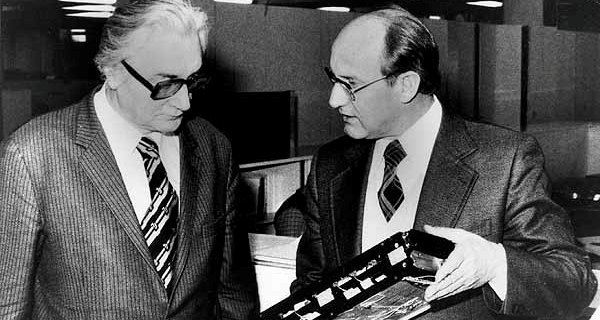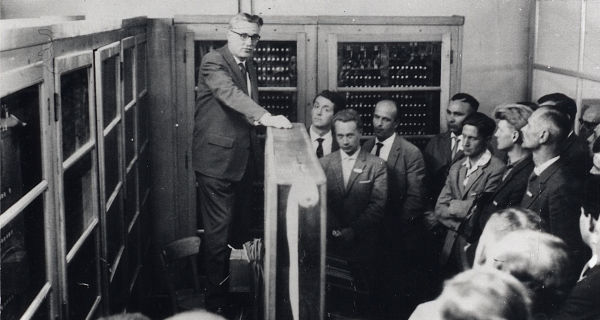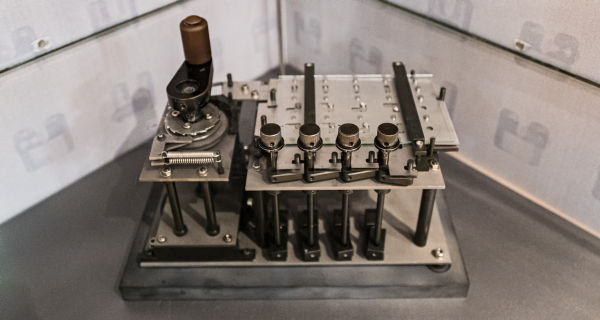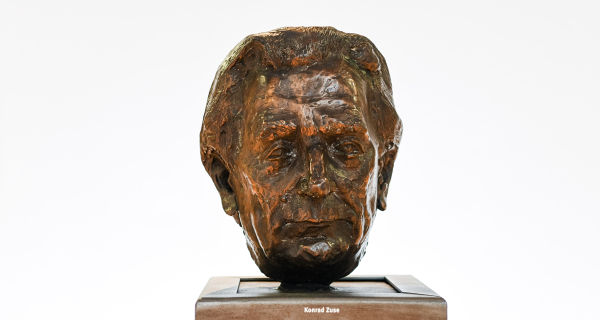Konrad Zuse hit upon the idea of building a program-controlled calculating machine when he had to deal with extensive calculations in statics. In 1935, he began to design and build - without any subsidies - a program-controlled calculating machine in his parents' home. It was based on the binary system and used punched tape for the program input. The Z1, which was built between 1936 and 1938, was a purely mechanical machine that was not fully operational. In 1940, Zuse began to build a successor to the Z1 based on relay technology. In May 1941, he finished the Z3 - worldwide the first freely programmable program-controlled automatic calculator that was operational.
Revolution based on the binary system
Zuse's main theoretical achievements in this development were:
- The insight that the logical structure of the machine is what counts, independent of different technical realizations.
- The use of the binary system in a semilogarithmic form to represent numbers.
- The use of binary logic to implement flow control.
All-rounder and entrepreneur
Between 1943 and 1945, Konrad Zuse developed the Plankalkül programming language. The idea behind Plankalkül was a pioneering effort in computer programming as it included concepts for handling problems relating to artificial intelligence, chess and list sorting.
Zuse already ran his own engineering office during the war. Earnings from leasing the Z4 to ETH (Swiss Federal Institute of Technology) in Zurich enabled him to set up his own company - ZUSE KG - in 1949 with the aim of manufacturing computers for a market that did not yet exist.
The exhibition examines various aspects of Konrad Zuse's person: the engineer, the entrepreneur, the painter, the father and, last but not least, the recipient of unparalleled honours. Proof of his activities as an engineer - inventing - is provided by over 50 patents.




